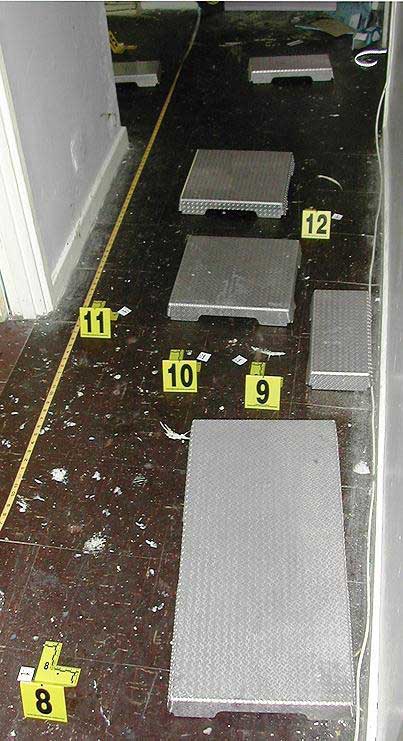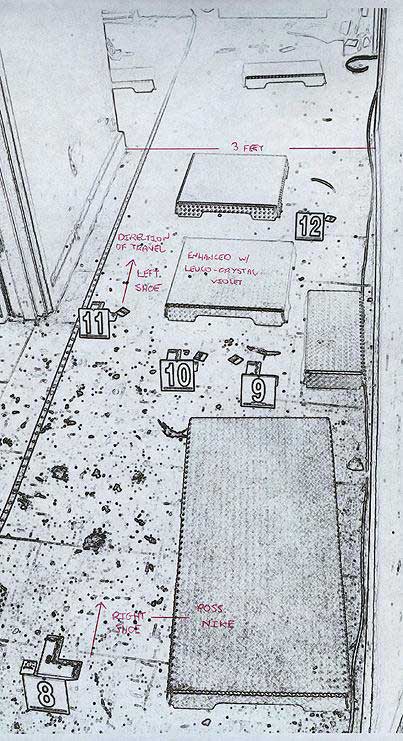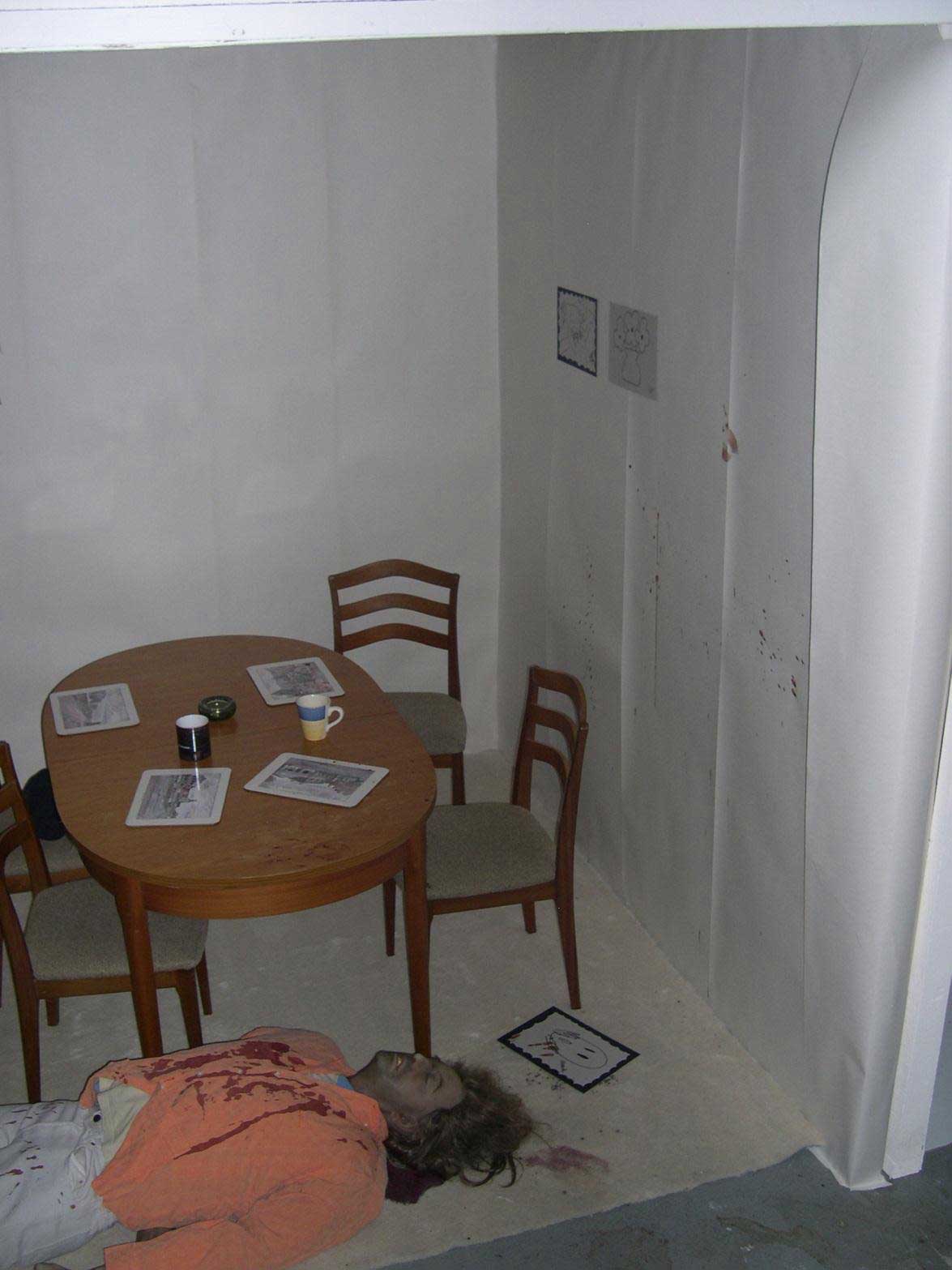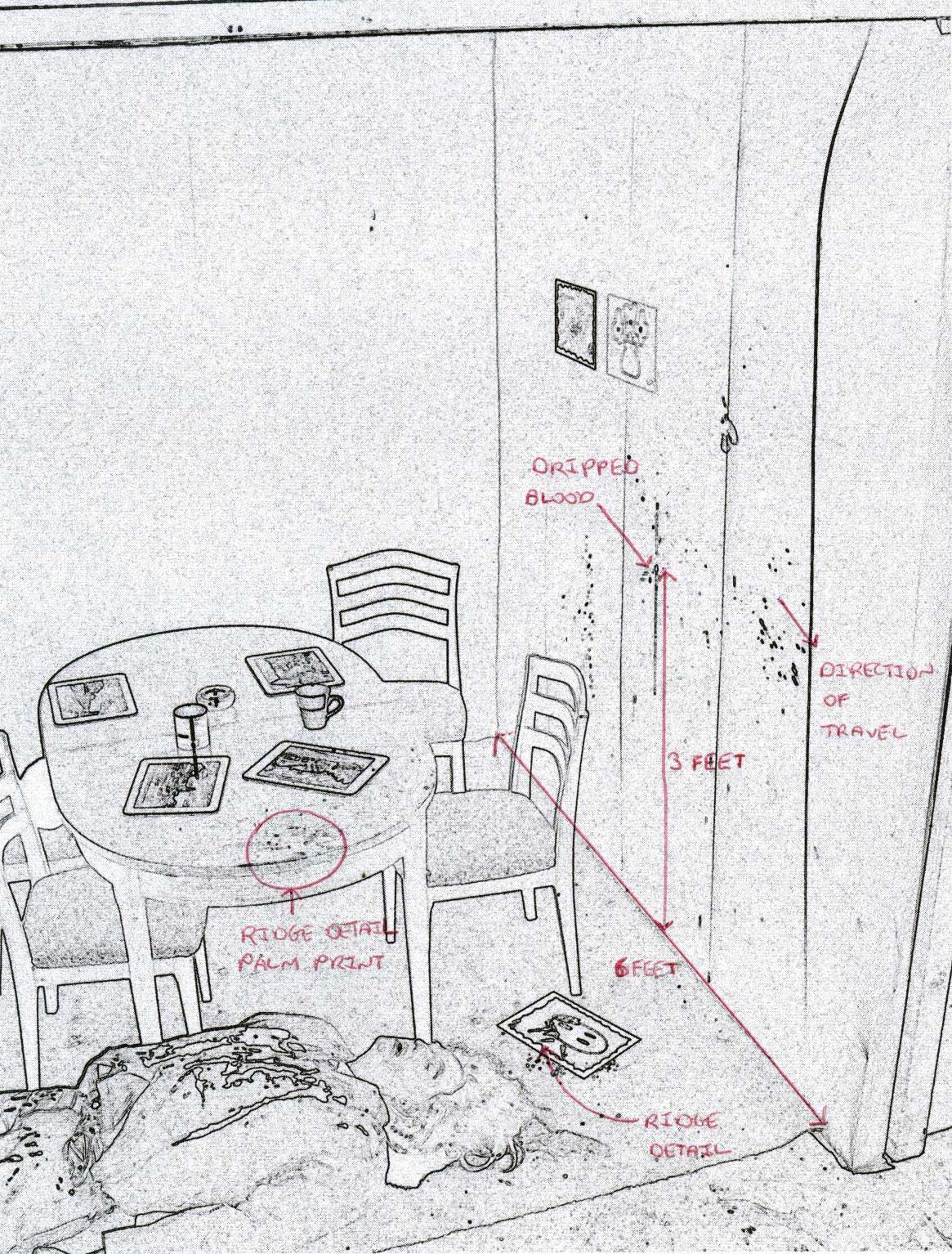A Simple and Quick Method of Making Sketches Using Adobe Photoshop®
Michael E. Gorn
Abstract
This article will describe how Adobe Photoshop® can quickly and easily be used to produce a sketch from any digital image. This can be useful during the laboratory examination of items or the processing of crime scenes.
Introduction
The production of sketches is a crucial step in the proper documentation of evidence, both in the laboratory and at crime scenes. Normally a rough sketch is made first followed by a smooth sketch if needed. The rough sketch does not need to be perfect and is produced either during the processing of a scene or during the bench examination of an item. At a scene, its purpose includes the documentation of objects in relation to each other, recording of measurements and positioning of evidence. In the lab, a sketch is produced denoting any evidence which may be present on that item (i.e. trace materials, blood staining). A smooth sketch is a more polished scale diagram, often produced for court.1
Normally, the rough sketch is simply drawn free-hand on paper with a pen and ruler. Plastic templates can be purchased to assist in making rough sketches. These templates contain commonly found items (i.e. weapons, furniture) which can be traced onto a sketch. In the lab, hand drawn templates of items such as clothing can be used but may not reflect the true appearance of the item being examined. However, the use of portable computer technology (laptop, printer and appropriate software) can greatly assist in producing quality sketches.
Materials
- Laptop computer and portable printer (If for use at crime scenes)
- Adobe Photoshop® (method is compatible with all versions of Photoshop® including Adobe Elements®)
Method
The process of converting an image to a sketch is as follows:
- Open the desired image in Photoshop®/Elements®
- Make a duplicate image of the original before conducting any further processing
- Using the menu bar, select image > mode > grayscale
- Using the menu bar, select filter > stylize > find edges
The duplicate image will now be reproduced in sketch format. If needed, the brightness and/or contrast can be used to develop more detail within the sketch.

Figure 1. Color crime scene image showing the location of footwear marks.

Figure 2. Sketch of figure 1 with hand notes and measurements

Figure 3. Color image of a mock crime scene (image reproduced courtesy of LGC Forensics).

Figure 4. Sketch of figure 3 with hand notes and measurements.
Discussion
Figures 1 and 3 are regular color images of a real and a mock crime scene. Figures 2 and 4 are the sketch versions of Figures 1 and 3 respectively. As illustrated, the sketches are shown in 3-D format with appropriate information labeled such as measurements, descriptions of patterns and general scene notes. Considering it may be difficult to accurately record 3-D information, such as bloodstain patterns on adjacent walls in an indoor environment, this technique would provide the scene analyst with another tool with which to document the evidence. This technique can also be used to create an accurate sketch from any items being examined in the laboratory as opposed to drawing free-hand diagrams which rely on the skill of the lab analyst and may not be a true reflection of the item being examined.
As long as proper history logs are maintained which document any changes to an image, there should be no issues in court. The author has used this technique in numerous cases, both in the lab and at scenes, without any objections from attorneys when presenting the evidence in court.
Conclusion
The use of Photoshop® software and computer technology, such as a portable printer, allows the lab scientist or crime scene investigator to quickly and easily produce a sketch from any image. This technique is not intended to replace an overall sketch, nor to be performed on every image taken, but just to provide an additional medium on which to record evidence such as bloodstain patterns and footwear marks. These sketches will accurately illustrate in a more 3-D format the scene being processed or item being examined instead of having to rely on the need to draw free hand or the use of pre-made hand drawn/plastic templates.
Acknowledgment
Thanks to Brian O'Hara, Massachusetts State Police (retired), for providing comments on the review of this article.
Reference
- Forensic Science; An Introduction to Criminalistics, DeForest, P., Gaensslen, R., Lee, H., McGraw Hill Inc. 1983
About the Author
-
Michael E. Gorn
Forensic Supervisor
Sarasota County Sheriff's Office
Forensic Services Unit
820 Bell Road, Unit G
Sarasota, Florida, 34240
This article was published by the International Association of Bloodstain Pattern Analysts![]() in the Journal of Bloodstain Pattern Analysis, Vol. 27, No. 3. September 2011.
in the Journal of Bloodstain Pattern Analysis, Vol. 27, No. 3. September 2011.
![]() Open Access: The International Association of Bloodstain Pattern Analysts Journal is an Open Access publication with all accepted and published manuscripts available at www.iabpa.org to members of the International Association of Bloodstain Pattern Analysts and the general public with permitted reuse. Prior to publication, the Journal will obtain a Creative Commons Attribution (CC BY) license for all accepted manuscripts. This license allows for the distribution of published manuscripts provided proper credit is given to the author(s).
Open Access: The International Association of Bloodstain Pattern Analysts Journal is an Open Access publication with all accepted and published manuscripts available at www.iabpa.org to members of the International Association of Bloodstain Pattern Analysts and the general public with permitted reuse. Prior to publication, the Journal will obtain a Creative Commons Attribution (CC BY) license for all accepted manuscripts. This license allows for the distribution of published manuscripts provided proper credit is given to the author(s).
Article posted November 14, 2023

